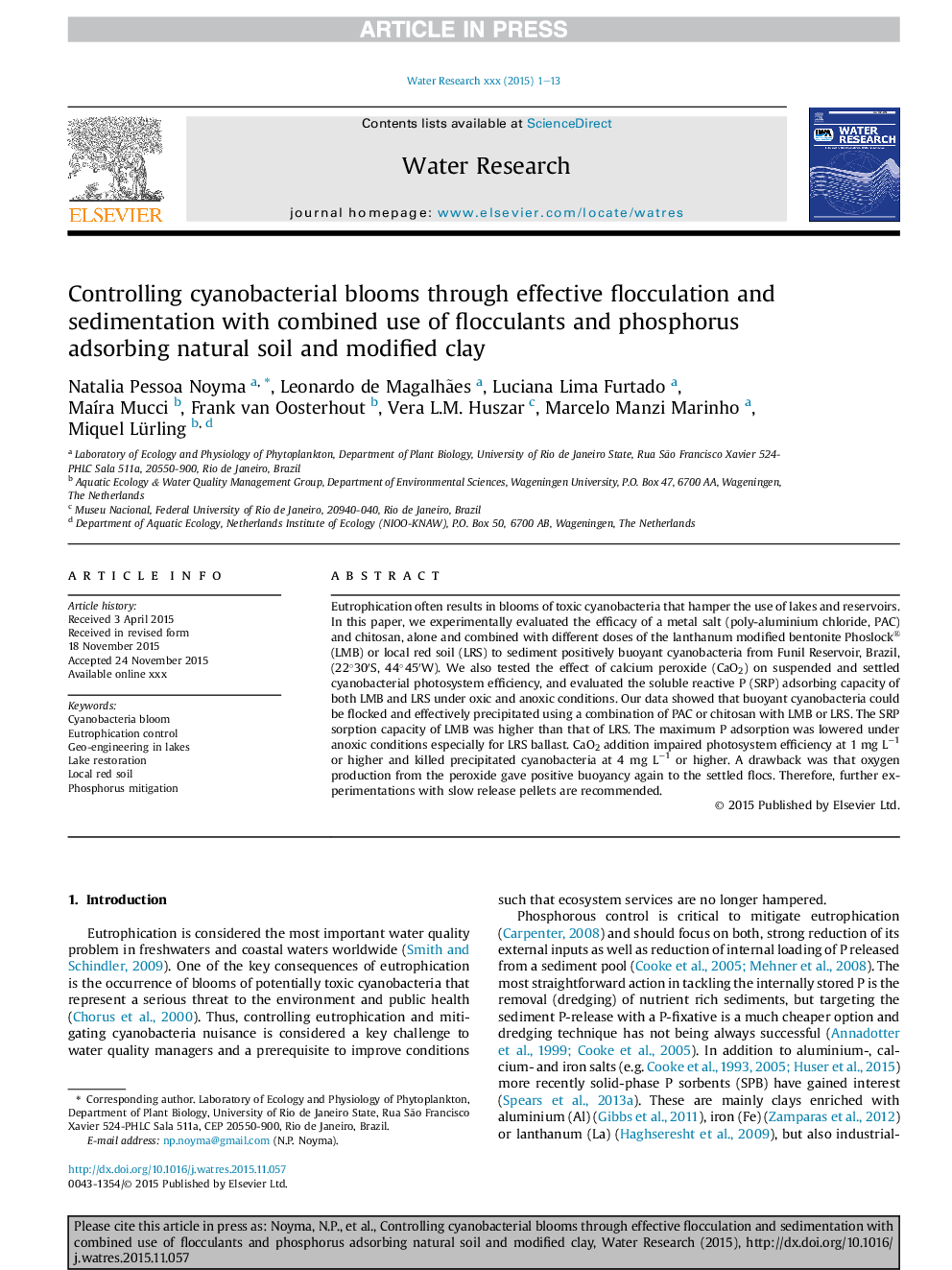| کد مقاله | کد نشریه | سال انتشار | مقاله انگلیسی | نسخه تمام متن |
|---|---|---|---|---|
| 6365082 | 1623071 | 2016 | 13 صفحه PDF | دانلود رایگان |
عنوان انگلیسی مقاله ISI
Controlling cyanobacterial blooms through effective flocculation and sedimentation with combined use of flocculants and phosphorus adsorbing natural soil and modified clay
ترجمه فارسی عنوان
کنترل شکوفه های سایانو باکتری ها از طریق انجماد و رسوب گذاری موثر با استفاده ترکیبی از فلوکولانت ها و جذب فسفر خاک طبیعی و خاک رس اصلاح شده
دانلود مقاله + سفارش ترجمه
دانلود مقاله ISI انگلیسی
رایگان برای ایرانیان
کلمات کلیدی
موضوعات مرتبط
مهندسی و علوم پایه
علوم زمین و سیارات
فرآیندهای سطح زمین
چکیده انگلیسی
Eutrophication often results in blooms of toxic cyanobacteria that hamper the use of lakes and reservoirs. In this paper, we experimentally evaluated the efficacy of a metal salt (poly-aluminium chloride, PAC) and chitosan, alone and combined with different doses of the lanthanum modified bentonite Phoslock® (LMB) or local red soil (LRS) to sediment positively buoyant cyanobacteria from Funil Reservoir, Brazil, (22°30â²S, 44°45â²W). We also tested the effect of calcium peroxide (CaO2) on suspended and settled cyanobacterial photosystem efficiency, and evaluated the soluble reactive P (SRP) adsorbing capacity of both LMB and LRS under oxic and anoxic conditions. Our data showed that buoyant cyanobacteria could be flocked and effectively precipitated using a combination of PAC or chitosan with LMB or LRS. The SRP sorption capacity of LMB was higher than that of LRS. The maximum P adsorption was lowered under anoxic conditions especially for LRS ballast. CaO2 addition impaired photosystem efficiency at 1 mg Lâ1 or higher and killed precipitated cyanobacteria at 4 mg Lâ1 or higher. A drawback was that oxygen production from the peroxide gave positive buoyancy again to the settled flocs. Therefore, further experimentations with slow release pellets are recommended.
ناشر
Database: Elsevier - ScienceDirect (ساینس دایرکت)
Journal: Water Research - Volume 97, 15 June 2016, Pages 26-38
Journal: Water Research - Volume 97, 15 June 2016, Pages 26-38
نویسندگان
Natalia Pessoa Noyma, Leonardo de Magalhães, Luciana Lima Furtado, MaÃra Mucci, Frank van Oosterhout, Vera L.M. Huszar, Marcelo Manzi Marinho, Miquel Lürling,
